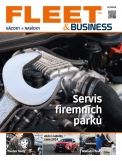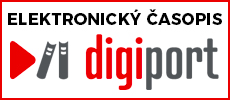Telematics has attracted attention from a wide range of players, including car manufacturers, telcos and telematics service providers. Each is determined to grab a slice of a new revenue stream that UBS Warburg predicts will grow from US$4.2 billion in 2000 to US$47.2 billion by 2010. Now MLS players, including wcities and Webraska, are starting to target the market, recognizing the synergies with their existing business. PDAs are set to be the devices driving developments
Telematics refers to the wireless delivery of a wide range of solutions to the car, including safety and emergency services, vehicle diagnostics, and mobile Internet and information services such as navigation and traffic.
For more information: Best car speaker, best car speakers in the world, best 6x9 speakers, best 6x9 car speakers
Services have traditionally been offered by automobile manufacturers in association with a service provider. But these have been available only to a limited number of new, luxury car buyers because of the high cost of the integrated cellular and GPS systems that are installed at purchase. The aftermarket has similarly been held back by price, with telematics systems costing in the region of 1,500 [pounds sterling] (US$2,137), according to one retailer.
The PDA, however, offers a lowerprice solution to drive adoption by the mass market. While existing players such as German automaker Volkswagen, which launched the "eGeneration" Golf complete with PDA for mobile Internet services in July, are investigating this option, a number of new telematics players from the MLS space are launching their own navigation offerings.
Location-based application and content provider wcities is currently developing a PDA-based in-car navigation service as a cheap aftermarket option. According to chairman and CEO Tan Rasab, there is a market gap to be filled. "The market is huge, but aftermarket systems are so expensive," he says. "We can offer the same services for just a few hundred pounds."
French MLS navigation-technology provider Webraska announced its solution, IbDN Lite (Internet-based Distributed Navigation Lite), in May this year, and the company hopes to roll it out via partners such as mobile operators, auto manufacturers and telematics service providers before year-end. The turn-by-turn navigation service delivers maps and voice instructions direct from the Webraska server via a wireless connection (GSM, GPRS or CDMA) to the user's GPS-enabled PDA.
See also: https://ok.ru/howtochoosethebestcarspeakers
The company was already offering similar technology to mobile operators and portals for the delivery of navigation services outside of the car, and, according to Webraska's corporate communications director Silvia Blanc-Bolelli, this was a natural extension. "The advantage of the PDA is that you can also guide users outside of the car," she points out. "Once [they are in] the parking lot, you can take them to [the] nearest public transportation point. Car manufacturers are interested in offering services outside of the car."
wcities is currently trialing its carnavigation solution with an unnamed Swedish auto manufacturer. The wcities setup comprises a GPS receiver in the vehicle plus a PDA connected to a mobile phone. At the start of the journey, the driver searches for his destination on the PDA, and route instructions are downloaded from the server based on his current GPS-determined position. During the journey, the driver receives regular voice and visual directions and is alerted if he leaves the planned route.
According to Rasab, the service is able to do this because it uses the company's own enhanced GPS solution that offers accuracy of two to three meters. The service tracks the user's speed (via the speedometer) and direction to improve standard GPS accuracy. It also allows the service to be maintained when the car is in a tunnel.
While these players have the technology and content, they face one key difference when launching services for the automobile market: Voice has to be the main delivery channel. Legislation banning the use of handheld phones in cars is becoming more widespread, and service providers recognize that it is unacceptable to distract the driver by displaying navigation maps on a small PDA screen. "Voice instructions are the solution," says BlancBolelli. "We obviously don't expect people to look at even the largest screen while driving."
Related article: https://git.ispconfig.org/snippets/335
Both wcities and Webraska have linked their in-car systems to the car speakers for the voice channel, with indepth maps available to help the driver visualize the route before he starts. During the journey, wcities users see only a simple arrow display indicating the direction of the next turning.
Neither Webraska nor wcities will define end-user pricing, but T-nav, a new navigation service from Motorola and Trafficmaster due to launch in UK and Germany this year, is expected to retail for 10 [pounds sterling] (US$14.25) per month. This is potentially a significant boost to ARPU, and a price that users, according to ARC Group, appear willing to pay (see chart).
[GRAPHIC OMITTED]



